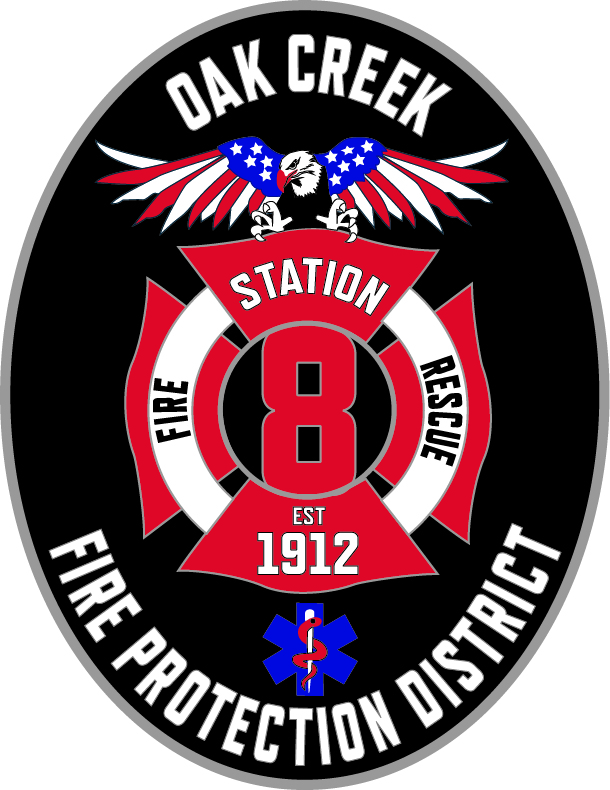Fire Danger: Low
What is the National Fire Danger Rating System?
The National Fire Danger Rating System (NFDRS) is a system that allows fire managers to estimate today's or tomorrow's fire danger for a given area. It combines the effects of existing and expected states of selected fire danger factors into one or more qualitative or numeric indices that reflect an area's fire protection needs. It links an organization's readiness level (or pre-planned fire suppression actions) to the potential fire problems of the day.
Knowledge of these levels can help forest visitors make decisions about whether or not to have a campfire or ride their OHV in a grassy area. Homeowners may choose to postpone burning a debris pile if they are aware of the fire danger level for that day. Contractors working in the forest may consider extra precautions when using equipment that might produce sparks. In some cases, the National Forest may even restrict certain activities based on the fire danger levels.
Shown below is a brief explanation of the different fire danger levels, using adjectives and colors based on criteria established by the National Fire Danger Rating System.
What fire danger factors are used to get the Fire Danger Rating?
The key inputs into the NFDRS model are: fuels, weather, topography and risks.
How is fire danger different than fire behavior predictions?
Fire danger is a broad scale assessment while fire behavior is site specific. In other words, fire danger ratings describe conditions that reflect the potential, over a large area, for a fire to ignite, spread and require suppression action. Fire behavior deals with an existing fire in a given time and space, describing the movement, intensity and indicators of rapid combustion of an ongoing fire.
What do you mean by "Adjective Rating"?
The "Adjective Ratings" are a public information description of the relative severity of the current fire danger situation in a general area. Adjective Ratings are generally posted on signs as visitor enter public lands or at agency offices. Many people associate these signs as "Smokey Bear signs".
What are the different levels and what do they mean?
We use 5 different color-coded levels to help the public understand fire potential. The purpose of this is for visitors to understand the current conditions and help mitigate their actions to prevent human-caused wildfires.
Fire Danger Level: Low
When the fire danger is "low" it means that fuels do not ignite easily from small embers, but a more intense heat source, such as lightning, may start fires in duff or dry rotten wood. Fires in open, dry grasslands may burn easily a few hours after a rain, but most wood fires will spread slowly, creeping or smoldering. Control of fires is generally easy.
Fire Danger Level: Moderate
When the fire danger is "moderate" it means that fires can start from most accidental causes, but the number of fire starts is usually pretty low. If a fire does start in an open, dry grassland, it will burn and spread quickly on windy days. Most wood fires will spread slowly to moderately. Average fire intensity will be moderate except in heavy concentrations of fuel, which may burn hot. Fires are still not likely to become serious and are often easy to control.
Fire Danger Level: High
When the fire danger is "high", fires can start easily from most causes and small fuels (such as grasses and needles) will ignite readily. Unattended campfires and brush fires are likely to escape. Fires will spread easily, with some areas of high-intensity burning on slopes or concentrated fuels. Fires can become serious and difficult to control unless they are put out while they are still small.
Fire Danger Level: Very High
When the fire danger is "very high", fires will start easily from most causes. The fires will spread rapidly and have a quick increase in intensity, right after ignition. Small fires can quickly become large fires and exhibit extreme fire intensity, such as long-distance spotting and fire whirls. These fires can be difficult to control and will often become much larger and longer-lasting fires.
Fire Danger Level: Extreme
When the fire danger is "extreme", fires of all types start quickly and burn intensely. All fires are potentially serious and can spread very quickly with intense burning. Small fires become big fires much faster than at the "very high" level. Spot fires are probable, with long-distance spotting likely. These fires are very difficult to fight and may become very dangerous and often last for several days.
